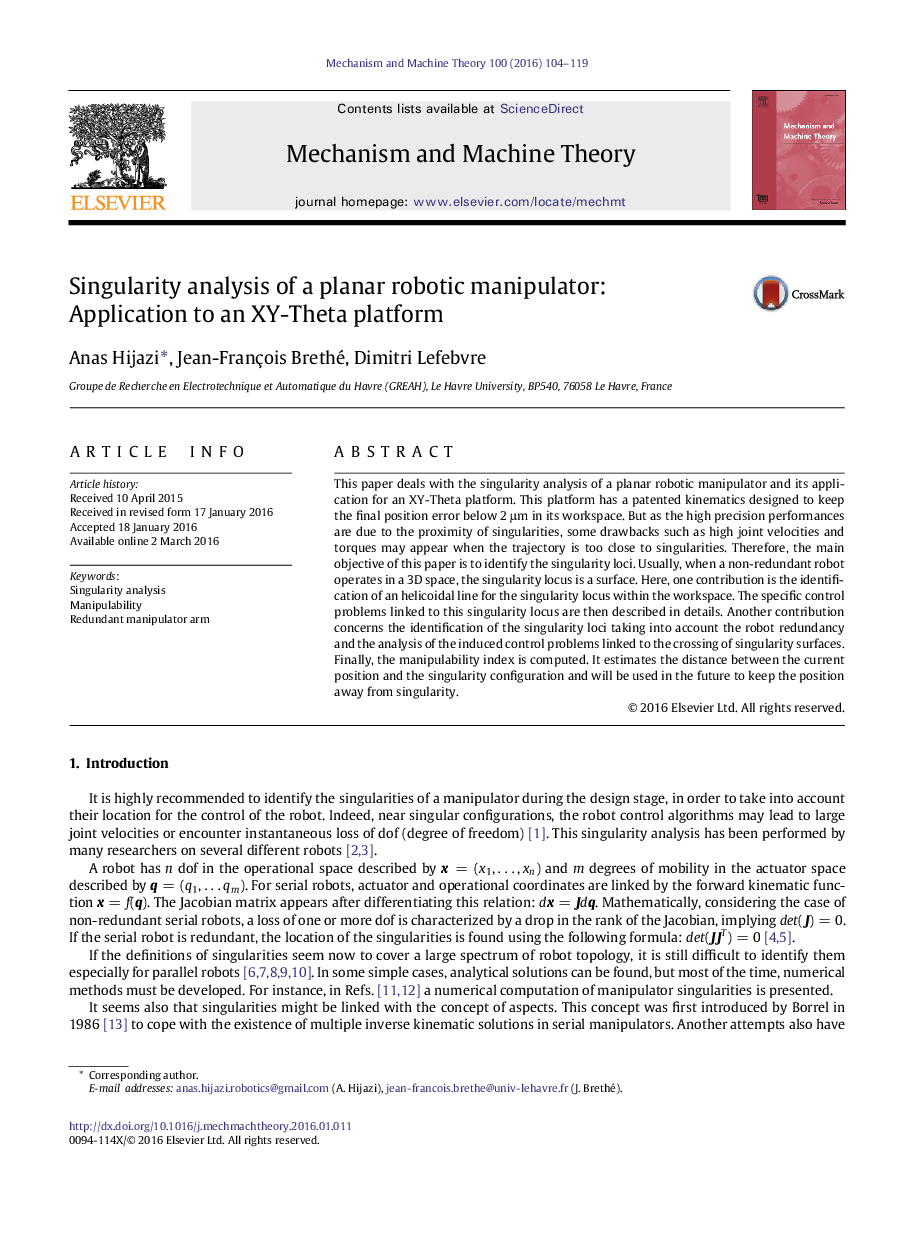| Article ID | Journal | Published Year | Pages | File Type |
|---|---|---|---|---|
| 802988 | Mechanism and Machine Theory | 2016 | 16 Pages |
•Description of an XY-Theta platform held by a serial robot with four motorized joints.•Geometric design of the robot using singularities to reduce position error by factor 5.•Singularity analysis of the platform to overcome control problem.•Identification of an helicoidal line for the singularity locus in the non-redundant case.•Identification of the singularity surfaces in the redundant case.
This paper deals with the singularity analysis of a planar robotic manipulator and its application for an XY-Theta platform. This platform has a patented kinematics designed to keep the final position error below 2 μm in its workspace. But as the high precision performances are due to the proximity of singularities, some drawbacks such as high joint velocities and torques may appear when the trajectory is too close to singularities. Therefore, the main objective of this paper is to identify the singularity loci. Usually, when a non-redundant robot operates in a 3D space, the singularity locus is a surface. Here, one contribution is the identification of an helicoidal line for the singularity locus within the workspace. The specific control problems linked to this singularity locus are then described in details. Another contribution concerns the identification of the singularity loci taking into account the robot redundancy and the analysis of the induced control problems linked to the crossing of singularity surfaces. Finally, the manipulability index is computed. It estimates the distance between the current position and the singularity configuration and will be used in the future to keep the position away from singularity.
